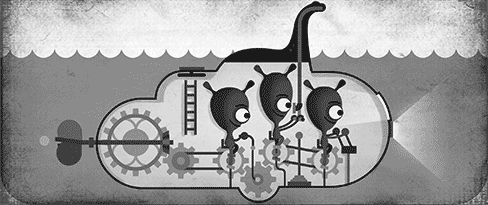
The most famous photo of the Loch Ness Monster was taken 81 years ago today. The grainy photograph “Nessie” was taken April 21, 1934 at the 800 feet deep Scotland lake.
The photo, known as the “Surgeon’s Photograph” was seen as evidence that the sea serpent existed, but it was later revealed to be an elaborate hoax. Nessie was in fact a toy submarine with a plastic wood head and neck shaped like a sea monster, according to the 1999 book Nessie: The Surgeon’s Photograph Exposed. The photo was taken by one of the hoaxers and given to Colonel Robert Wilson, who sold it to the Daily Mail.
“Sketching boats in dockyards was the inspiration for this illustration. Once I’d assemble working cogs as the Google logo, all that was left was to show a cut away and reveal of what REALLY took place under the surface,” the Doodle’s artist said.
Here’s what you need to know:
1. Google Has Joined the Search for the Loch Ness Monster
The photograph and legend of the Loch Ness Monster has led to several expeditions to find it, including the “Big Exhibition” by biologist Roy Mackal in 1970, studies by researcher Robert Rines in 1972, 1975, 2001 and 2008, and BBC’s Search for the Loch Ness Monster in 2003.
Numerous videos and photos claiming to show Nessie have surfaced over the years. In 2014, a satellite photo from Apple showed a creature in the lake, sparking excitement that it may have been the monster.
Now, thanks to Google, you can search for Nessie from the comfort of your home. Google released 360-degree Street View imagery of Loch Ness on April 20, the 81st anniversary of the famous “Surgeon’s Photograph” of the “monster.”
Click here to view Loch Ness on Google Maps.
Sven Tresp, Google’s Street View Special Collections program manager, said on Google’s official blog:
To take you on a tour of what lies beneath, our partners at the Catlin Seaview Survey dived deep under the surface of the lake, collecting imagery along the way. You can imagine Nessie nestling within these dark, peat-filled waters, waiting for the right moment to breach the surface into the Scottish sunlight above.
Wherever you stand on the Nessie debate, the legend lives on—even in the digital era. There are more searches for Loch Ness than there are for other U.K. institutions like Buckingham Palace and the Peak District. And as we celebrate Loch Ness with today’s Doodle, we hope you can enjoy some of the most history-laden and breathtaking imagery the highlands have to offer with Street View in Google Maps.
2. The Hoax Was an Act of Revenge Against the Daily Mail
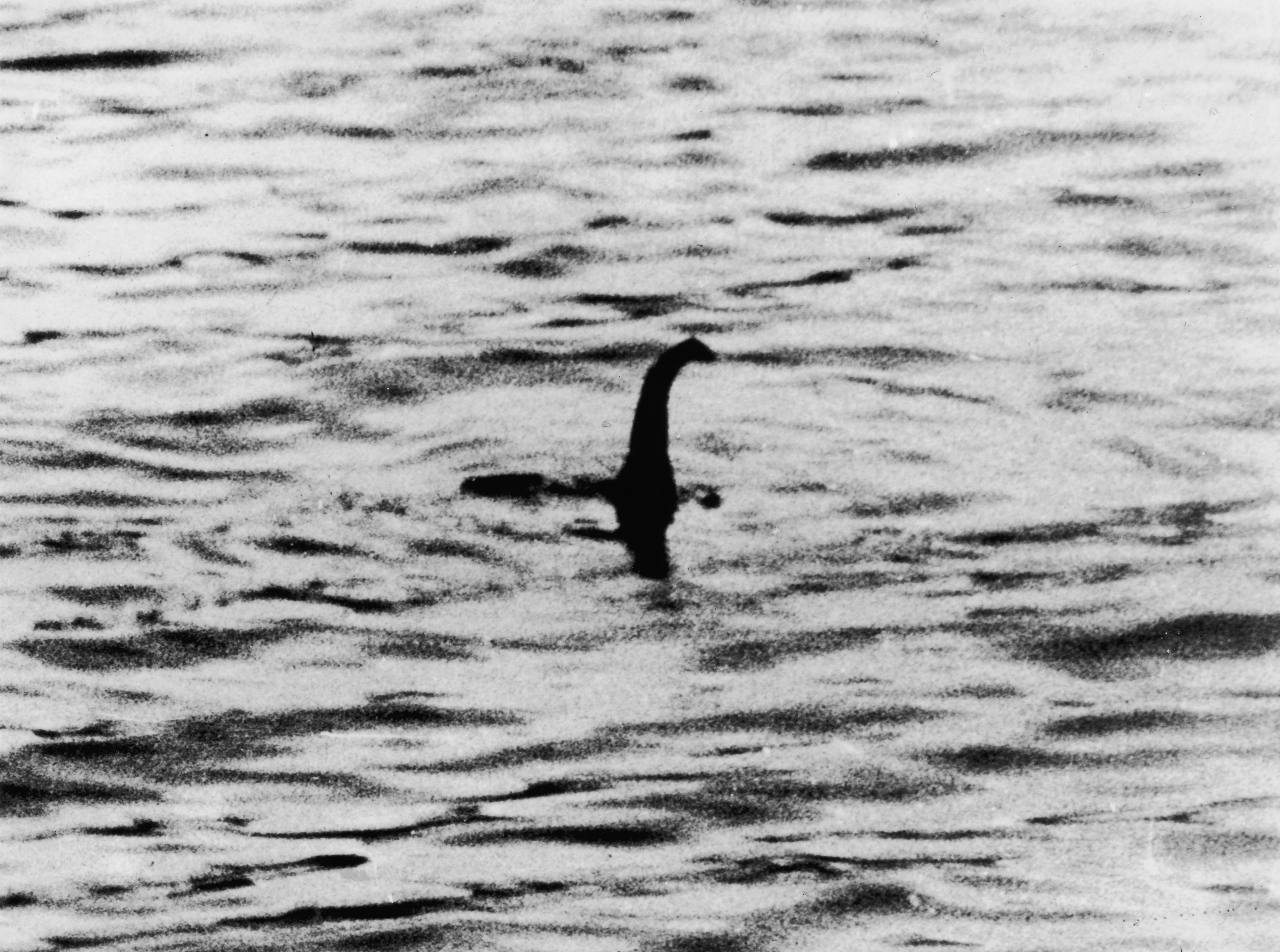
A view of the Loch Ness Monster, near Inverness, Scotland, April 19, 1934. The photograph, one of two pictures known as the ‘surgeon’s photographs,’ was allegedly taken by Colonel Robert Kenneth Wilson, though it was later exposed as a hoax by one of the participants, Chris Spurling, who, on his deathbed, revealed that the pictures were staged by himself, Marmaduke and Ian Wetherell, and Wilson. (Getty)
In March 1994, 60 years after the photo was published, Chris Spurling confessed on his death bed that the photo was a hoax. According to the Museum of Unnatural History, Spurling said he sculpted the monster’s head and carried out the hoax along with his father-in-law and two other men.
Spurling said his father-in-law, Marmaduke Wetherell had been hired by the Daily Mail newspaper to find the Loch Ness Monster in 1933. He found what he thought was a footprint of the monster, and was ridiculed after it turned out he was wrong. Wetherell, his son, Ian, and Spurling came up with a plan to get revenge on the newspaper. The built the “monster” using a toy submarine and a plastic wood sculpture. Ian Wetherell took the photo and it was then given to a local doctor, Colonel Robert Wilson, who was in on the hoax. He sold the photo to the Daily Mail.
Despite Chris Spurling admitting that the photo was a hoax, some believers in the monster have argued the photo was of the real monster. Tim Dinsdale, who gained fame as a seeker of the monster and filmed a video he claims showed Nessie, argued in his book Loch Ness Monster that it was not a hoax.
He said in the book that there are “obscure features” in the photo that have “profound signifance.” He said there was a solid object breaking the surface to the right of the neck and another mark of some sort to the left and behind the neck. Dinsdale argued that those objects could be part of the monster. He also said there are small ripples in the water behind the neck, which seem to have been caused after the neck broke the surface.
Others have questioned why it took so long for the hoax to be revealed.
3. The Legend of the Loch Ness Monster Dates Back to 565 AD
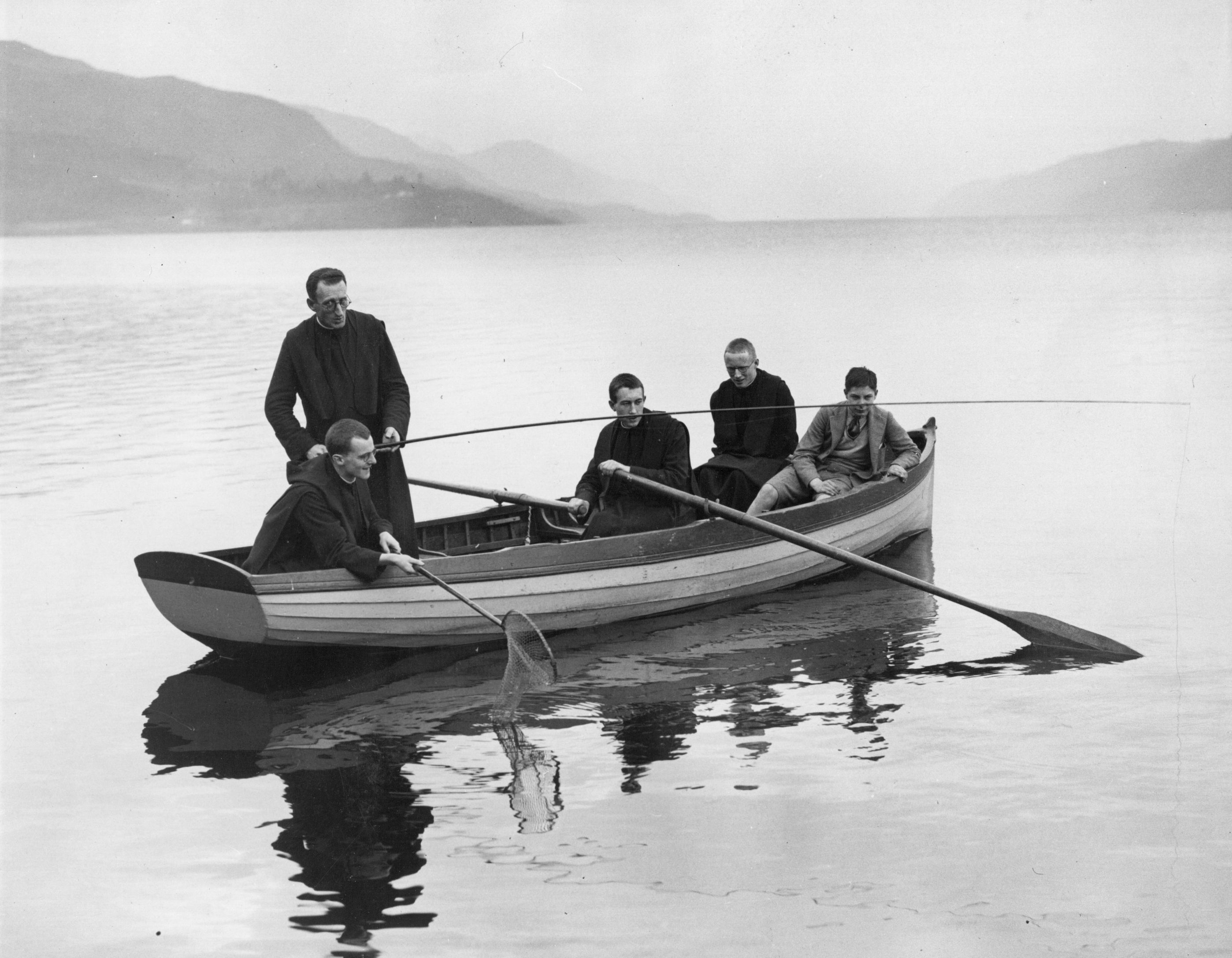
A group of monks from the Fort Augustus Abbey go angling on Loch Ness which is famed for its mythical monster on February 23, 1935. (Getty)
The first alleged photograph of the monster was taken in 1933, but mentions of a sea creature in Loch Ness date back much farther. The first mention of the monster was in 565 AD when missionary St. Columba reportedly saw a monster in the lake, according to National Geographic. St. Adamnan wrote about the encounter in the biography of St. Columba, according to Christianity.com.
St. Adamnan wrote the account of the sighting more than 100 years after it happened. He said St. Columba saw local men burying a man who had been pulled from the lake after being bitten by a water monster. As one of Columba’s men swam across the lake, the monster surfaced and darted at him. According to Christianity.com, Columba crossed himself and said, “You will go no further, and won’t touch the man; go back at once.” St. Adamnan wrote that the terrified monster fled “more quickly than if it had been pulled back with ropes.”
4. A Top British Scientist Was Fired After Claiming the Monster Exists
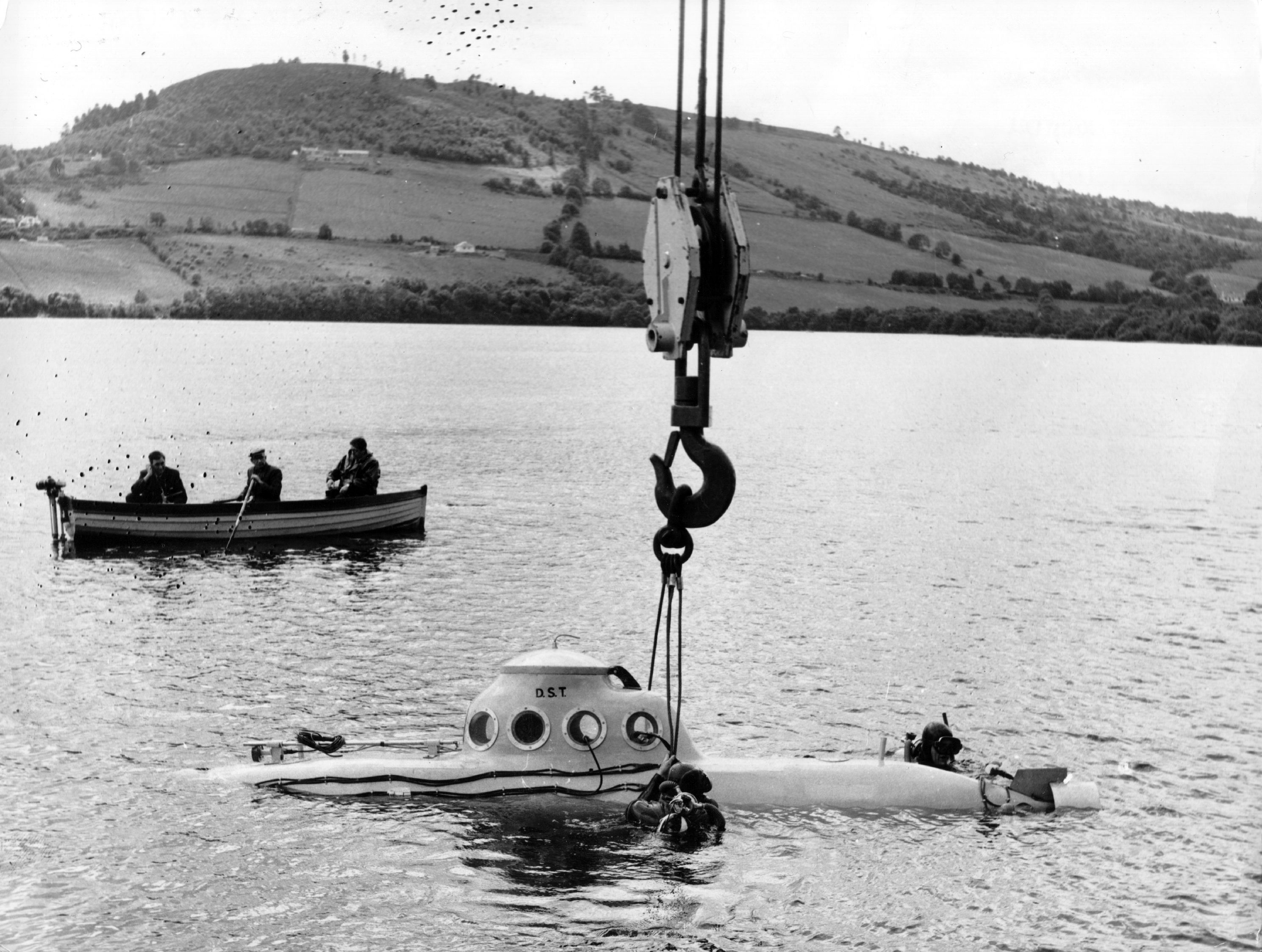
A submarine is lowered into Loch Ness to begin its search for the monster on July 7, 1969. (Getty)
Recently released documents show that one of Britain’s premier scientists was fired from his job after claiming that the Loch Ness Monster existed. According to The Independent, Dr. Denys Tucker was removed in 1959 from his position as zoologist at the National History Museum. He was the chief scientist there and was its foremost expert on eels.
The secret file on Tucker was revealed this month. The then 39-year-old Tucker never worked in an academic post again. According to the Independent, Tucker had an “obsession” with Nessie, believing it was a long lost plesiosaur, a marine reptile from the Jurassic Period that disappeared 66 million years ago. Tucker wrote to the New Scientist:
I, a professional marine zoologist, did see a large hump travelling across flat calm water on 22 March 1959, and do quite unashamedly assert that it belonged to an unnamed animal. I am quite satisfied that we have in Loch Ness one of the most exciting and important problems in British zoology today.
5. The Legendary Sea Monster Has Made Loch Ness a Popular Tourist Attraction
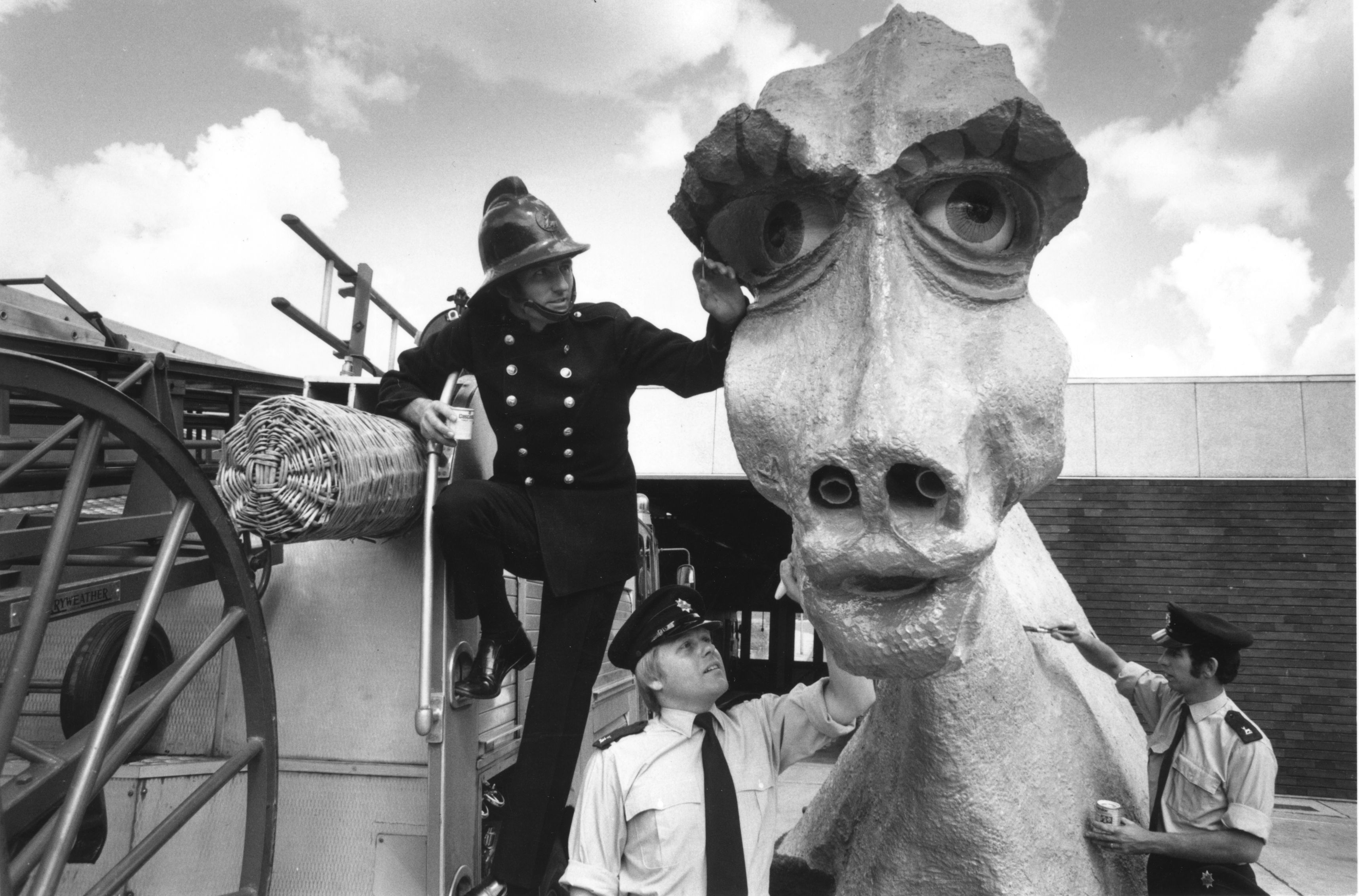
In 1975, Firemen from Hemel Hempstead, London, adding the finishing touches to a seductive female Nessie, intended to lure the Loch Ness Monster from his Scottish depths. (Getty)
According to Management Today, the Loch Ness Monster is worth at least £25-30m, and possibly as much as £130m, to the lake region. Willie Cameron, the head of Loch Ness Marketing, called the monster a “marketing man’s dream.” He told Management Today, “It’s here 365 days a year. It doesn’t need feeding or cleaning. It’s as big as Coca Cola, Madonna, Elvis Presley. It’s global.”
A £2m tourism campaign was launched in early 2015 to bring more visitors to northern Scotland, according to Scotsman.com. Inverness MP and Chief Secretary to the Treasury Danny Alexander said:
The loch is a jewel in the crown of the Highlands tourism industry, which creates and sustains many jobs in Scotland. Around the world, Loch Ness is one of the best-known places in the UK, so it’s right we place it at the heart of our international tourism campaign. Visitors attracted by the mystery of Loch Ness will discover a part of the country with much more to offer.
